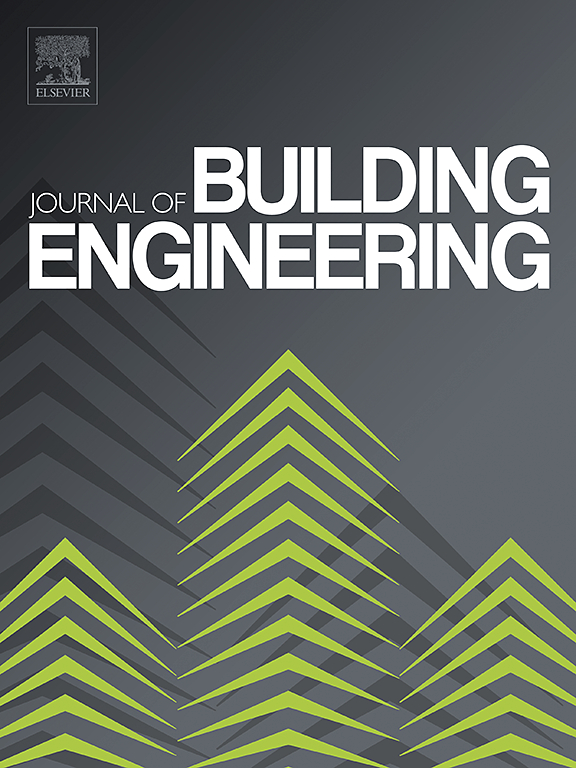Stability of double-skin truss-reinforced composite shear wall under axial compression
IF 6.7
2区 工程技术
Q1 CONSTRUCTION & BUILDING TECHNOLOGY
引用次数: 0
Abstract
Traditional reinforced concrete shear walls have the disadvantages of significant weight, limited ductility, and prolonged construction cycles. Double-skin composite shear walls, which consist of two steel plates and the infilled concrete, effectively address these issues. However, these walls feature thinner cross-sections than traditional concrete shear walls and thus, the stability of the walls under axial compression is quite important especially at the bottom of the high-rise buildings. In this paper, the stability of a newly proposed double-skin truss-reinforced composite shear wall under axial compression was investigated. Axial compressive tests were conducted on seven specimens and the failure modes were obtained. The influences of wall thickness, wall width, steel plate thickness, and boundary condition on the stability of the specimens were evaluated. Finite element models were established using ABAQUS, and the accuracy of the model was verified by comparing with the experimental results. Parametric analysis was further performed to investigate the influences of parameters such as wall height, wall width, wall thickness, steel plate thickness, and truss spacing on the ultimate strength of the wall. Meanwhile, the influences of wall width, wall thickness, steel plate thickness, and truss spacing on the stability coefficient were explored according to the stability coefficient -normalized slenderness ratio curves. It was also found that the current design codes, including GB 50936-2014, ANSI/AISC 360-22, EN 1994-1-1, CECS 624–2019, and T/CECS 926–2021, cannot be applied for the design of stability of the double-skin truss-reinforced composite shear walls. Therefore, a method for the design of stability of this type of composite shear walls was proposed. Good agreement was observed between the predictions by the established equations and the data from both tests and finite element results.
求助全文
约1分钟内获得全文
求助全文
来源期刊

Journal of building engineering
Engineering-Civil and Structural Engineering
CiteScore
10.00
自引率
12.50%
发文量
1901
审稿时长
35 days
期刊介绍:
The Journal of Building Engineering is an interdisciplinary journal that covers all aspects of science and technology concerned with the whole life cycle of the built environment; from the design phase through to construction, operation, performance, maintenance and its deterioration.
 求助内容:
求助内容: 应助结果提醒方式:
应助结果提醒方式:


